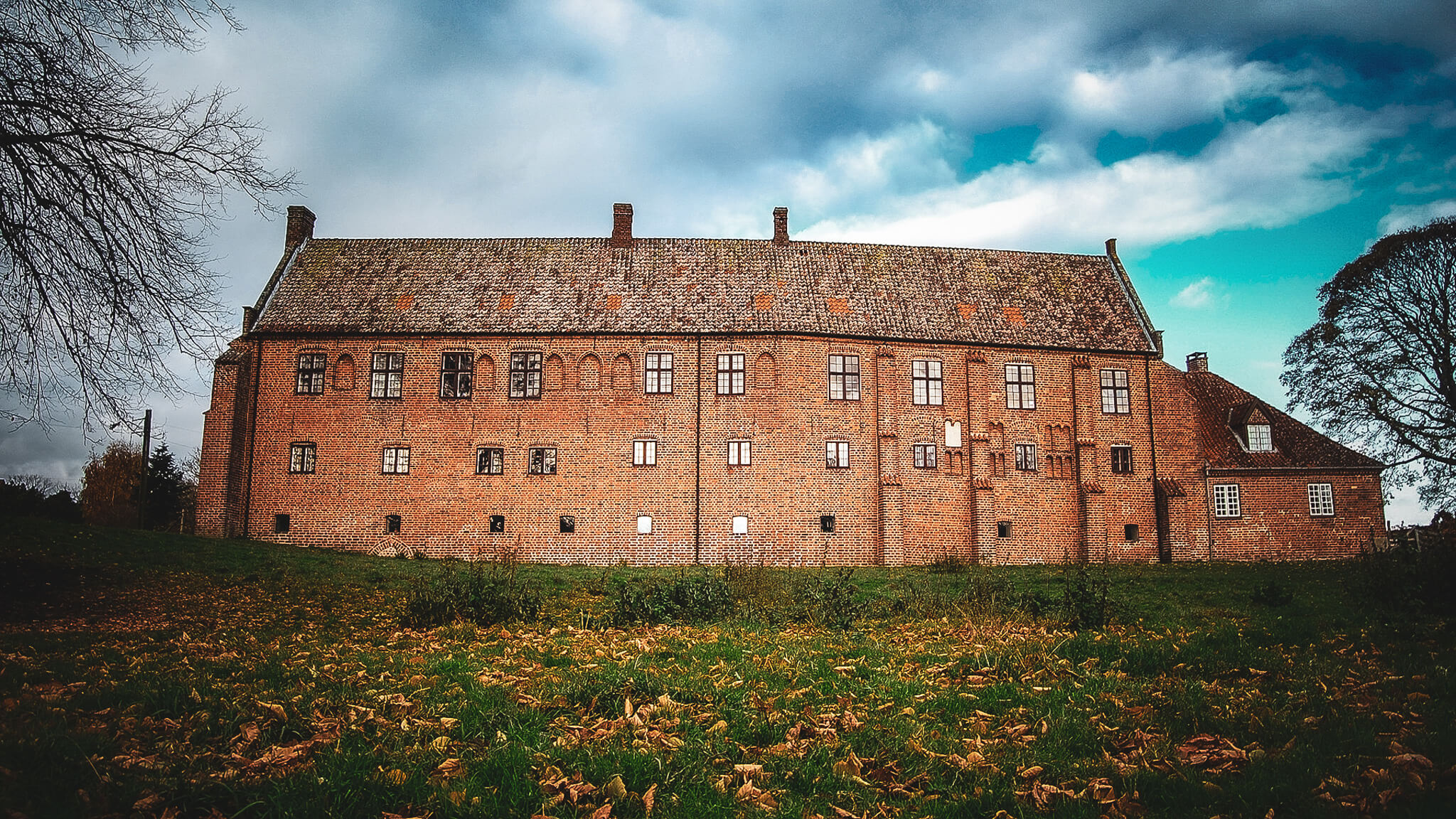History of the Abbey
A building full of Danish history
Throughout the Middle Ages, from the arrival of the first monks in 1151 until the middle of the 16th century, Esrum Abbey held great power in society; religious, political and economic. The building that remains holds countless stories of human life over 900 years.
French monks come to Esrum
In 1151, a new culture arrives at Esrum. French monks from the Cistercian Order spread across most of Europe, and Esrum is one of the chosen places. The area is made for the Cistercians: they are always founding new abbeys in remote river valleys where nature is rich in resources. The Cistercians receive the land from Archbishop Eskil of Lund. He is committed to strengthening ties with one of Europe’s most successful and powerful monastic orders.
Who was the Cistercian Order?
The monks at Esrum Abbey were Cistercians. An order that originated in France in the year 1098. They originate from an already existing monastic order; the Benedictines. The Cistercians wanted to live a rule-bound life that, in addition to prayer, also focused more on the work of the hand. They lived under the motto Ora et Labora – Pray and work. They lived by the Rule of Benedict – a book with 73 rules for monastic life.
The heyday of the abbey
From 1151 and for the next 400 years, the abbey dominates the development of the area around Esrum. Cistercians work with the latest technology. They are skilled builders, farmers, gardeners and millers. Drawing experience from their network across Europe, they are slowly reshaping the landscape: building the large monastery complex, digging ponds and canals, building a mill and lots of workshops.
The abbey is powerful and well connected. The monks come from the most powerful families in the country. The Abbot of Esrum was a member of the Privy Council on several occasions, and with landholdings stretching over 1/3 of North Zealand, the abbey was both a religious and political powerhouse.
The king takes over the abbey
In 1536, the Reformation changes the entire balance of power in Denmark. The Catholic faith is replaced by the Protestant faith, and Esrum Abbey loses its position in society.
The king puts himself first and takes over all the abbey’s assets, land and properties. Overnight, he becomes a very rich man. North Zealand now becomes the king’s private property with extensive hunting grounds, castles, agriculture and fishing. The king removes symbols of power and demolishes the church and large parts of the abbey. He converted the last remaining wing into a royal hunting lodge.
Royal horses and milling
The kings use Esrum Kloster for much more than hunting. A large part of the royal stud business is located in Esrum, and the valuable and coveted Frederiksborg horses roam the meadows along Esrum Sø. In 1717, the stud farm moved to Frederiksborg Slot and a royal dragoon regiment, soldiers on horseback, moved to Esrum.
Christian IV is also inspired by the monks’ mill operations. He wants to streamline it and thinks big. Esrum Å will be diverted and the landscape will change significantly. The former stream, which used to run freely across the meadows, is now steered into a completely straight channel. The monks’ mill in the meadow is demolished and a new large mill is built. Of course, the king secures all the revenue from the mill operation, and no one else is allowed to operate water mills on Esrum Å. A few hundred years later, Esrum Møllegård is built, where the shop and café are located today.
A home for people and objects
Over the years, several different government agencies move into the old abbey building.
First the Kronborg District’s regimental clerk, with the power to judge. For a short period of time, a prison cell is set up in the basement. In 1796, the county administration moves in; a public administration unit responsible for collecting two annual tax collections. For more than 100 years, powerful county officials and their families have lived in the house.
From 1931, the National Museum uses the building as a warehouse for valuable furniture. With World War II looming, the entire eastern part of the top floor was secured so that the room could be used as a bomb and fireproof shelter for special documents from the Royal Library. The complete works of philosopher Søren Kierkegaard are secured here.
For a short time after the war, the buildings were home to a small child welfare home and a refugee home.
The Colonel's home opens to the public
The last residents are Colonel and Chamberlain Sonne and his wife. The couple are good friends with Frederik IX and Queen Ingrid. Unfortunately, the colonel dies relatively early, but Mrs. Sonne maintains the friendship. Mrs. Sonne will live until she is 100 years old. The rooms on the first floor were the setting for her life until the place was taken over by Frederiksborg County in 1996.
Frederiksborg County begins an extensive excavation and restoration. In 1997, Esrum Kloster & Møllegård opened to the public and is today run as a cultural attraction that aims to leave a mark on its guests through inspiring cultural and natural experiences.
We aim to inspire reflection on the relevant questions of life. Questions we have always been, still are and will continue to be concerned with.
